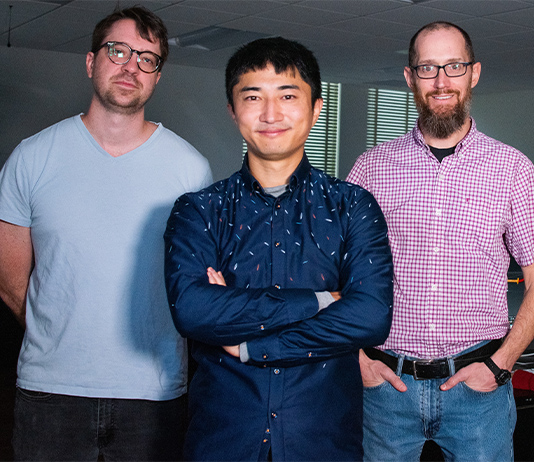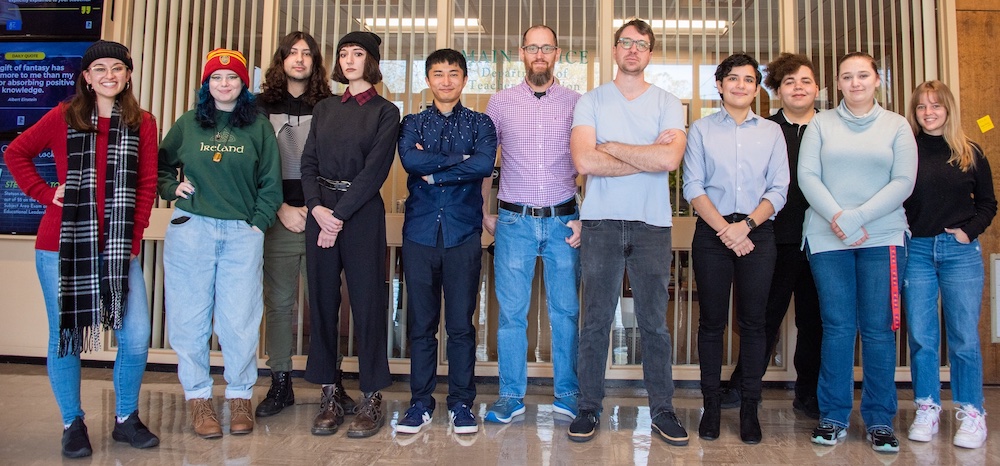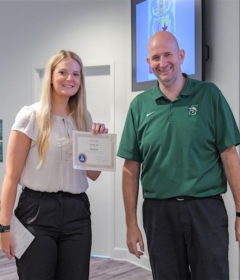Digital Arts Program Recognized Among Best for Game Design by The Princeton Review


As announced on March 22, among 150-plus institutions offering game-design coursework and/or degrees across the United States, Canada and countries abroad, The Princeton Review included Stetson in its Top 50.
Stetson was ranked No. 41 in the 13th annual ranking of Top Game Design Schools for 2022.
The colleges making the 2022 list resulted from a survey The Princeton Review conducted last year of school administrators. The selection of schools was based on criteria that broadly covered the quality of faculty, facilities and technology. The Princeton Review also factored in data collected from the schools on their curriculum and career services.
The Princeton Review, a college admission services company, developed the survey in 2009 with the assistance of an advisory board of educators and industry professionals.
‘Covers All Areas’
“Our Digital Arts Program and the Computer Science Department offer a range of courses that covers all areas related to video game and animation production,” said Dengke Chen, MFA, assistant professor of Digital Arts. Chen has helped to lead Stetson’s efforts in game design since fall 2018.

Stetson’s Digital Arts Program began in 1996 as a partnership among the computer science, studio art and music departments. Today, courses include graphic design, web design, 3D computer animation, hand-drawn animation, video game development, artificial reality and virtual reality, digital photography, interactivity art, digital video, audio recording and production, electronic music and sound design, and scoring for multimedia.
With a total of roughly 30 students in the program, Chen teaches 3D computer animation, hand-drawn animation, video game development and other courses related to digital video.
“All topics in our courses are interconnected, and we are also connected with the Computer Science Department,” Chen continued. “For example, students can take computer science courses to learn programming languages. Then, they take the 3D animation courses to learn how to design and create characters for video games. They take the video game development course to build video games in different genres. And they collaborate with students who take electronic music courses to compose background music and sound effects for the game.”
On average, there are six students who make video games or 3D animations as their senior project, with all of them having experience in the game/animation industry.
‘Flexible Curriculum’
Technology is a big component in fostering creative work, cited Nathan Wolek, PhD, Stetson professor of digital arts and music technology. Notably, in 1999 Wolek was one of the first graduates of the Digital Arts Program, and after getting his graduate degree, he joined the faculty in 2005 and has helped to lead Digital Arts since that time.
“Having a flexible curriculum is important as the technology continuously changes,” Wolek commented. “We are certainly not teaching the same techniques that I learned as a student in the late 1990s.”
For example, Wolek teaches Electronic Music and Sound Design. There, students can choose a path into “procedural audio” — the basis for doing sound-design work on gaming.
The FIEA Factor
In 2017, a game-changing partnership emerged, involving the University of Central Florida’s Florida Interactive Entertainment Academy, or FIEA. The partnership was modeled after the widely successful Stetson Undergraduate Research Experience (SURE), using donor funding and strategic alliances.
FIEA, in collaboration with Electronic Arts (EA) Tiburon, delivers an industry-based video game career education in a world-class facility in downtown Orlando. Each summer, two or three Stetson students are given the opportunity to learn the latest game-development processes for producers, artists and programmers. And they are expected to pursue a self-designed research project. As with SURE, the students work with a faculty mentor to develop an idea for a project to complete at FIEA. They work full time on the project and receive a $2,500 grant.
Most of them continue graduate studies at FIEA and subsequently work in the industry.

Within the Digital Arts Program, two other principal players for game design are Matt Roberts, MFA, professor of digital arts; and Chaz Underriner, PhD, assistant professor of digital arts.
Roberts’ expertise ranges from real-time video performance, new media applications and augmented reality to physical computing, video projection mapping and photography. His work has been featured internationally and nationally, including shows in Taiwan, Brazil, Canada, Argentina, Italy and Mexico, and nationally in New York, San Francisco, Miami and Chicago.
Most of Underriner’s own work revolves around the concepts of landscape and portraiture in the context of experimental music. He has composed works for solo instruments, chamber ensembles, chamber and symphony orchestras, jazz combos, electronics, film, dance and choir. Each of those components can have a role in game design, he noted.
A Win for Students and Alumni
In the end, the beneficiaries are Stetson students and alumni.
“The Digital Arts Program has come very far,” said Alex Ramirez ’19, who majored in digital arts and is now an associate game designer at EA in Orlando.
Zoe Boykin ’22 agreed. A digital arts major who is graduating a year early, she initially wanted to learn about game design simply because she enjoyed playing video games. She had no idea how they worked, conceding, “I never understood them.”
Now, it’s a different story — both for her and Stetson’s newly ranked Digital Arts Program.
“Game design just really drew me in,” Boykin concluded, “and I feel like it’s always going to be a passion of mine.”
Editor’s note: Look for a feature story about Stetson’s game-design success in the Spring Issue of Stetson University Magazine, to be published in April.



